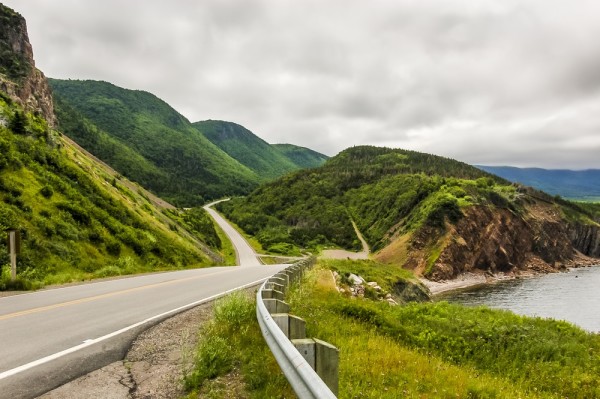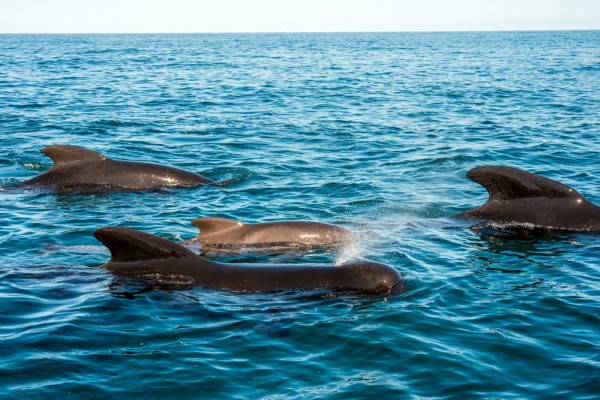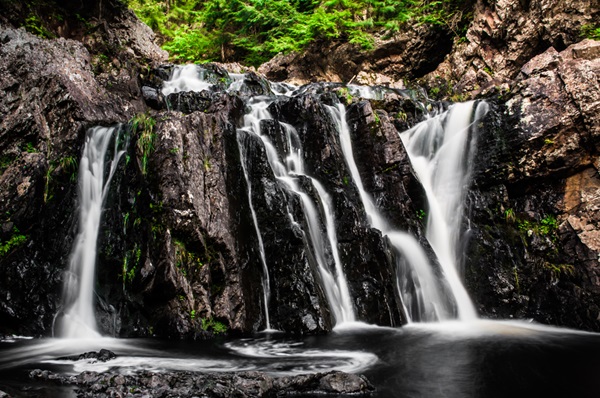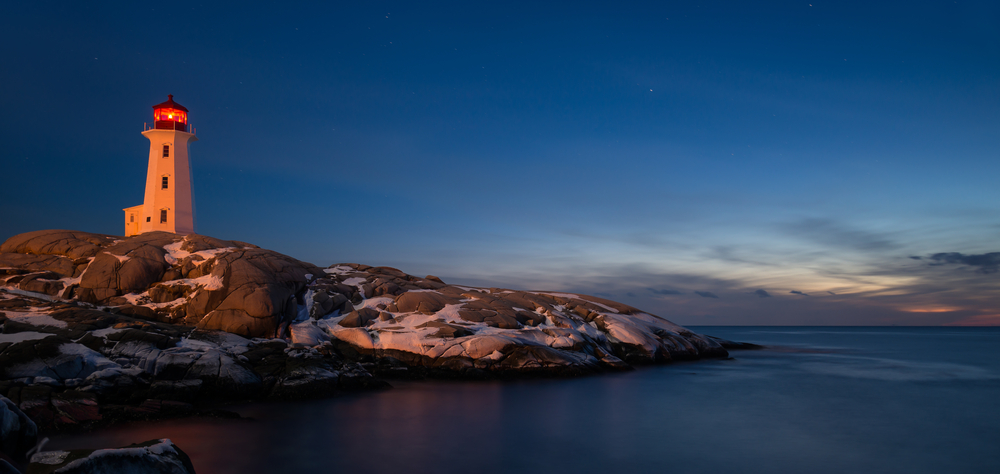Nova Scotia was one of the first regions colonized during European expansion in the 16th century, but was originally settled by the Mi’kmaq Nation before the arrival of the French and English. Since then the province survived multiple wars, including offering aid to the British in the American Revolution and Union Forces in the American Civil War, and ultimately became a founding region in the Canadian Confederation, the early bases of the free nation of Canada.
Though one of the smallest provinces in Canada, Nova Scotia has remained a powerful figure in the country’s history, from its early history in Canada’s birth to today, where it is one of the major military sectors of the country, housing nearly 40% of its total military strength. Its position on the coast has earned it a strong position in naval history in both the shipping industry and large scale fishing, and still holds a strong presence due to its access to off-shore oil. From Ellen Page to Donald Sutherland, Nova Scotia has produced a plethora of world-renowned actors and films, including Titanic, and it is a major cultivator of the arts in Canada.
But who is Nova Scotia?
Nova Scotia is one of the most peaceful and relaxing provinces of Canada. A peninsula with a strong relationship with the sea, it offers travelers a lush, untouched coastline to enjoy and explore. Home to a mixture of races and cultures, the province hosts a wealth of museums, cultural institutions, and a history of championing civil rights and equality. Nova Scotia offers the explorer the chance to road trip around its gorgeous coastline and the bohemian the artistic scene to get lost in.
Getting to Nova Scotia
Nova Scotia is one of the small provinces in Canada, just slightly larger than Prince Edward Island, and rests on the far east coast, just northeast of Maine. Almost an island, Nova Scotia is surrounded on all sides by water with the exception of the north western area which connects it to New Brunswick.
VIA Rail is still one of the best services for traveling throughout Canada and Nova Scotia is easily accessible with a ride from Montreal to Halifax, the province’s capital. If you’re looking to fly, Halifax Stanfield International Airport is a straight shot from NYC, Chicago, Calgary, Paris, London, and Reykjavik. You can also fly in through JA Douglas McCurdy Sydney Airport in Sydney, Cap Brenton Island, or take a smaller flight to Yartmouth International Airport in Yartmouth.
If you do fly, be aware of new changes to Canada’s Immigration Policy, as they may have changed. The Canadian Immigration Services has a useful tool for determining if you need a VISA or ETA before traveling to Canada that you should consult.
Traveling by land, however, one of the most scenic ways to experience Nova Scotia and the rest of north eastern Canada. It’s roughly a 13 hour drive from Boston to Halifax on the I-95 into New Brunswick and then the NB-1 into Nova Scotia.
Nova Scotia is also considered a motorcyclist’s paradise for the many coast routes that stretch around it.
And, of course, you could always travel by sea via a ferry or cruise ship. The fastest route is by the CAT (no, it does not meow) a deluxe ferry from Portland, Maine to Yartmouth, Nova Scotia. Ferries.ca also offers specific routes and schedules from New Brunswick and Prince Edward Island.
Weather in Nova Scotia

There are only two major cities in Nova Scotia – Halifax and Sydney – and a couple dozen towns throughout the peninsula that are extremely welcoming to travelers and offer tours and activities throughout the island’s diverse coastline.
Despite its relation to the sea, the temperature is largely continental, feeling relatively warm in the summer (70 – 80 F, 20 – 25 C) and cold in the winter (0 – 35 F, -15 – 0 C). However, the sea does have an impact, and the temperature and weather can shift based on how close you are to it.
Though one wouldn’t think it, Nova Scotia is a popular surfing destination for adventurers looking to conquer the cold waves along the tropical ones. Despite its northern location, the waters around Nova Scotia are relatively warm, so its best to keep a swimsuit on hand.
And a sweater. Because, let’s be honest, its still a coastal northern region and its bound to get cold after sundown. Beyond a sweater and swimsuit, a good pair of boots is always good for hiking, especially if they’re water proof and you’re looking to explore the Bay of Fundy on a coastal hike.
Top Attractions in Nova Scotia

Again, let’s be honest, the ocean is the heart and soul of Nova Scotia. With miles of untouched coastline, there are plenty of places to swim and surf around here. And if you don’t feel like dipping into the Atlantic Coast, there is a thriving whale watching community here.
But the sea isn’t all Nova Scotia has. Adventure travelers and road trippers are bound to make it inland to hike and bike the numerous provincial parks riddled throughout the region. The Cabot Trail is one of the most popular among cyclists (both motor and non) looking to explore Cape Brenton. Plus there are plenty of camp grounds that welcome visitors to spend a few nights under the gorgeous skies and besides the roaring sea.
And because the province has a diverse heritage, there are dozens of museums and cultural institutions showcase the art, music, history, and achievements of everything from the Scottish immigrant roots to the native Mi’kmaq past and the Black Nova Scotians who came from all around the world to build this great province. Cape Brenton, Halifax, and Sydney are the most obvious places to discover Nova Scotia’s culture and history, but the all of Nova Scotia’s towns hold some connection to the great cultural web of the province.
Sports are a huge part of Nova Scotia’s culture and hockey is at the center of it. If you’re in Halifax or Cape Brenton, make sure to grab tickets to a Mooseheads or Screaming Eagles match (and grab them early)! Beyond hockey, Nova Scotia is also popular among golfers who are looking to do a round on the many fields throughout the peninsula.
Whatever you do, keep your options open. Nova Scotia is a road trippers paradise and a great place to get lost in, from the small towns to the expansive coastline.

| Dollar | Canadian Dollar (CAD) |
| Language | English |
| Cultural Etiquette | As far as manners, Canada isn’t far off from the U.S.Do not point or make rude gestures at anyone. Handshakes are the best way to introduce yourself. If you’re meeting someone, it’s best to arrive on time and not too late or too early.Almost all businesses practice a “no shirt, no shoes, no service” policy. |
| Food | Fresh and local. Expect to find some of the finest seafood on the east coast, alongside some amazing wineries and breweries. |
| Restaurant Etiquette | Tipping is standard practice in Canada so be prepared to provide at least 15% if someone helps you out professionally. |
| Safety Level | Very Safe. If you’re exploring the coast, keep an eye on tide levels and the weather forecast in case there’s a storm on the way. During winter, be careful when driving, as the roads can develop black ice and its suggested you call 511 in Nova Scotia to check road conditions. |
| Getting Around | Martime Bus has services all throughout the peninsula as well as New Brunswick and into Quebec. |
| Emergency Services | All Services: 911 |
| Additional Resources | The national website for Nova Scotia hosts a wealth of services and details that you can’t pass up when making travel plans. |
Ready to get Tours4fun travel deals & tips straight to your inbox? It’s Free! Follow the fun and sign up today






There are no comments.